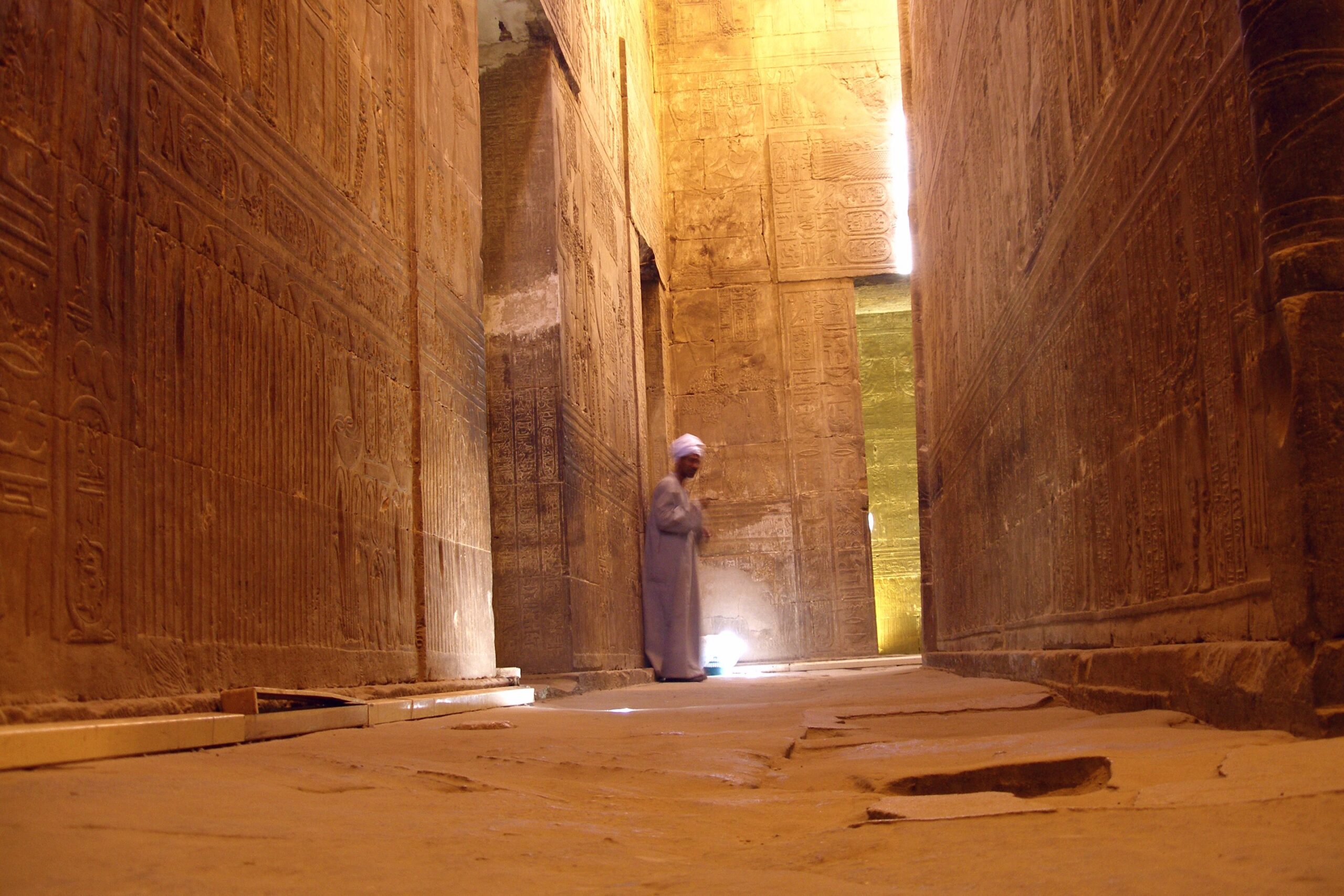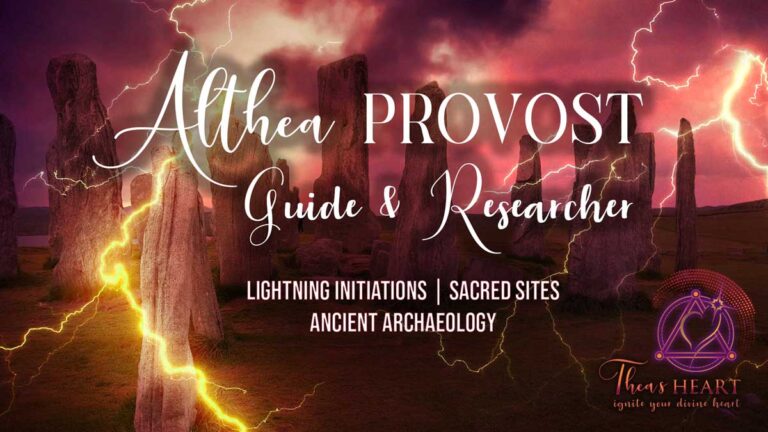Exploring Edfu Temple
Exploring the Egyptian temple of Horus, the falcon-king of Bhd.t, better known as Edfu.
Join us on a Starseed Egypt Adventure, September 6-17, 2024. 12 days, 11 nights.
Video credit: Thea’s Heart® LLC, 2022.
Music credit: Talisman, Egzod, Talisman, 2017. Uprise Music.
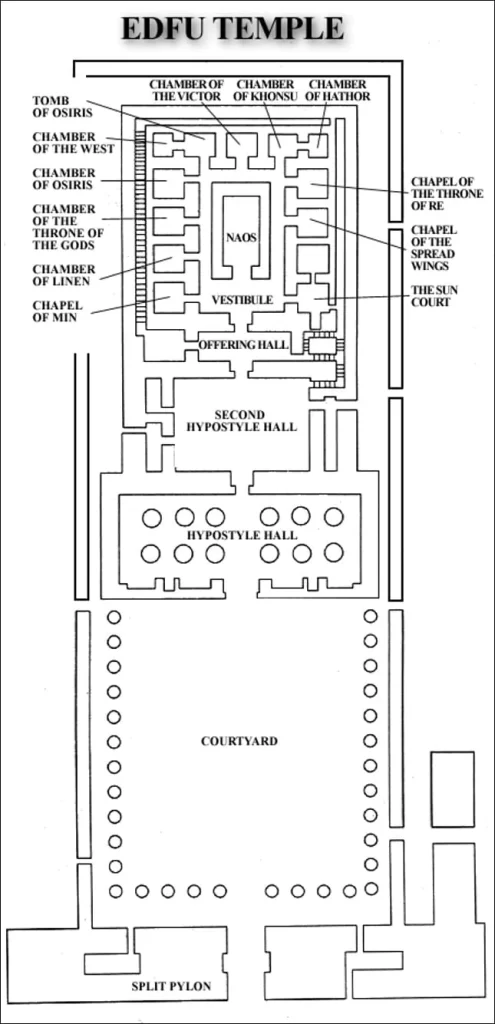
Edfu Temple Layout
Photo credit: Wikipedia Commons
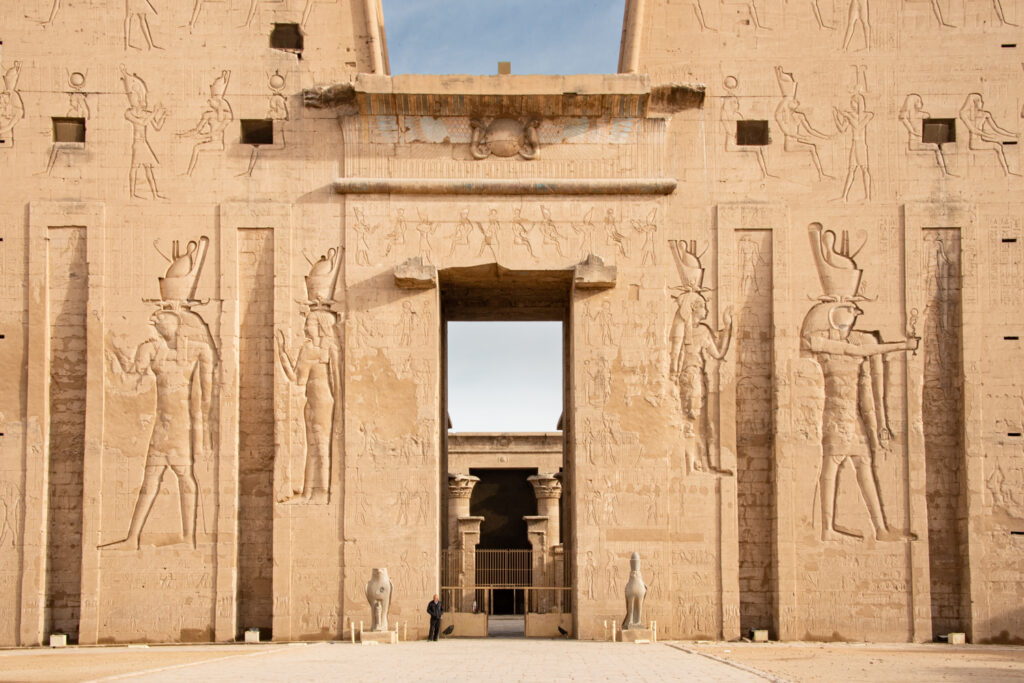
Once brightly painted, the monumental gateway of Edfu measures 118ft in height.
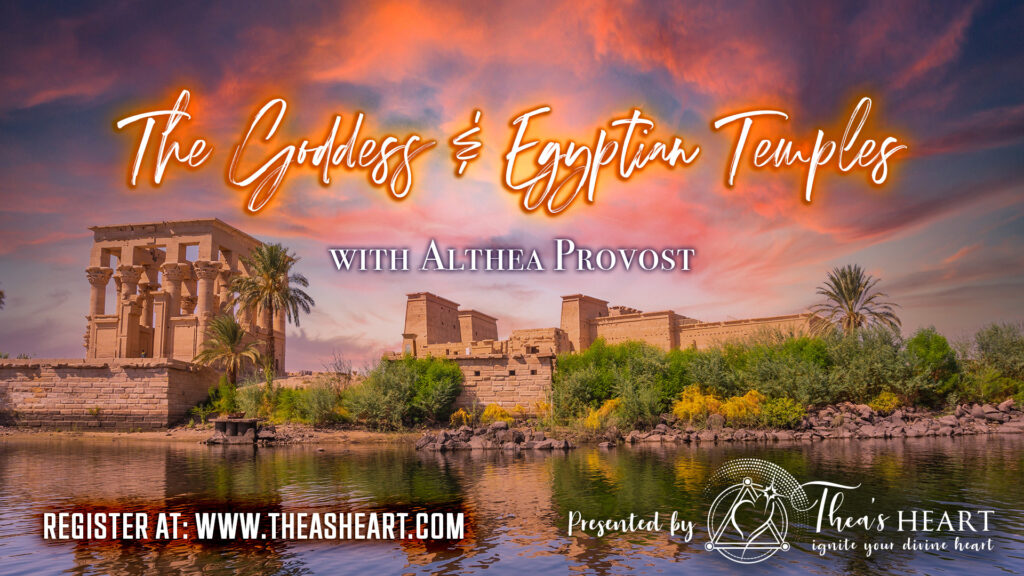
The Goddess & Egyptian Temple: explore our class to learn about Isis and the temple of Philae.
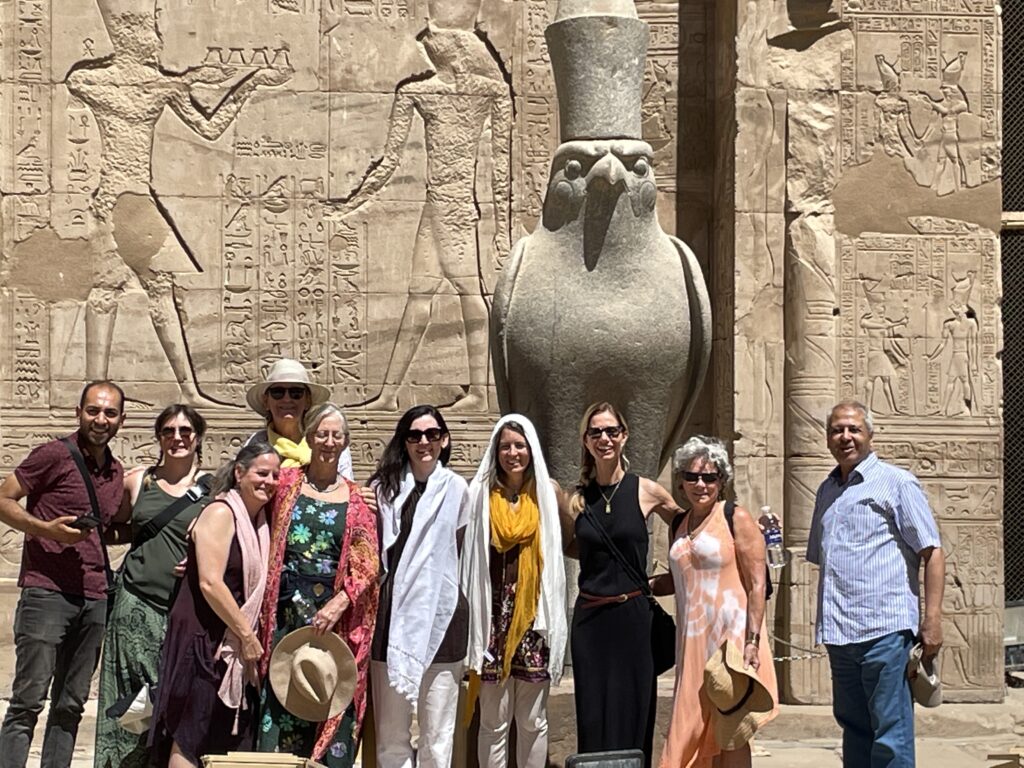
Starseeds at Edfu Temple.
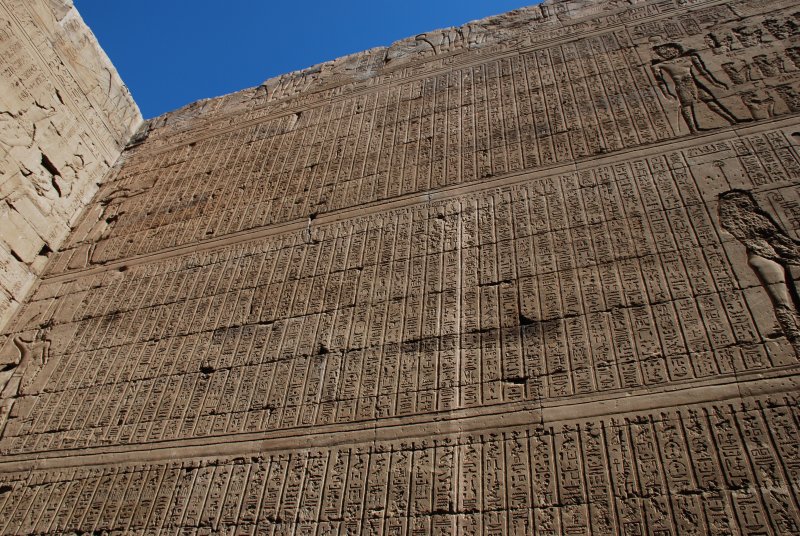
The temple passageways are inscribed with creation texts and historical scenes. The Passage of the Victory describes the victorious battle of good over evil between Horus & Seth (not shown). This inner passage packed an energetic punch.
It’s Day Six
Sailing from Philae and Kom Ombo temples, our private Dahabeya, a traditional, fully staffed Egyptian liveaboard, snakes its way through Upper Egypt toward Edfu. The veil of time feels thin while on the Nile River, vistas once shared by the ancient Egyptians who, thousands of years prior, would have gathered along the banks to observe the arrival of the processional boats. A sacred barque carrying their goddess, Hathor, enshrined as a golden statue, departed from Denderah, her holy temple, fourteen days earlier, sailing to Edfu Temple to meet her beloved falcon-headed sky god, Horus. Once here, their annual Feast of the Beautiful Meeting commences, a fertility ritual and mystical union that produces a god-child who grows to adulthood in two months.
Moored to the west bank, we disembark up the rampway to a city so densely positioned along the waterways. Several horse-drawn Hantoors are waiting dockside to take us to Edfu. Our drivers maneuver the jammed streets skillfully; the smell of freshly baked goods captures my attention, a cue forming outside the small bakery tightly squeezed between a row of street shops. People and cars flood this dusty city. The Hantoors follow a well-worn route that existed before this bustling city covered the pastoral fields of plenty. Traveling about a third of a mile from the river, we approach the outer brick enclosure wall surrounding the Edfu temple. This thick barrier, roughly 20 feet high, once kept the profane world out and the unbounded waters from the rising Nile from flooding the temple grounds.
The Place of the Throne
Bhd.t, ‘the Place of the Throne,’ now known as Edfu, was built over time and in various stages. The first brick was laid on the 23rd of August, 237 BCE, when the third pharaoh of the Ptolemaic period, Ptolemy III Euergetes, started his reign and completed it under Ptolemy XII Auletes in 57 BCE. The main entrance doors were installed in Lebanese cedar during the final phase. Can you hear the banners of antiquity waving in the breeze as you approach the entrance? The wooden flag poles would have reached 131 feet high; all that remains are the recesses attached to the entrance façade.
Edfu is one of the most preserved temples, with its roof intact, and yet, the area is now barren of water, the sacred lake, and nature’s lushness. At Edfu, what captures my immediate attention is the interior walls that contain the building texts—inscriptions describing a creation story. This calamity brought seven survivors, the Shemsu Hor, to Behdet to rebuild society. And somewhere around this ancient town, a mound was either created or chosen and at some point, a consecrated mud brick was carefully laid on sacred earth, marking the original temple. The previous foundation of Edfu, a solar temple aligned East-West, adhered to the sun’s movement. Today, Edfu Temple, rebuilt during the Greek period, is oriented North-South.
Approaching the monumental gate, known as a pylon, it becomes immediately apparent to any initiate that we entered the temple of Horus. Carved into the outer sandstone wall is a towering falcon god, and flanking the entranceway are two falcon-god statues in granite. Symbolism appears above the doorway with the Naum or sun disk, the painted wings of the vulture on the inner lintel, and a ten-foot, tall black granite statue of Horus, wearing the Pschent, the double crown of unified Egypt worn by rulers, positioned in the forecourt.
Entering the temple’s interior, on either side of the pillared galleries are rooms for the sacred text and robes where the priests, tasked with serving their deity, prepare for temple rituals. Here, we would be guided along the ritual path once held by the leopard-skinned priest. In antiquity, prayers were cited at each subsequent door as the priest progressed through the halls and chambers until the temple’s highest point, the holy of holies, was reached.
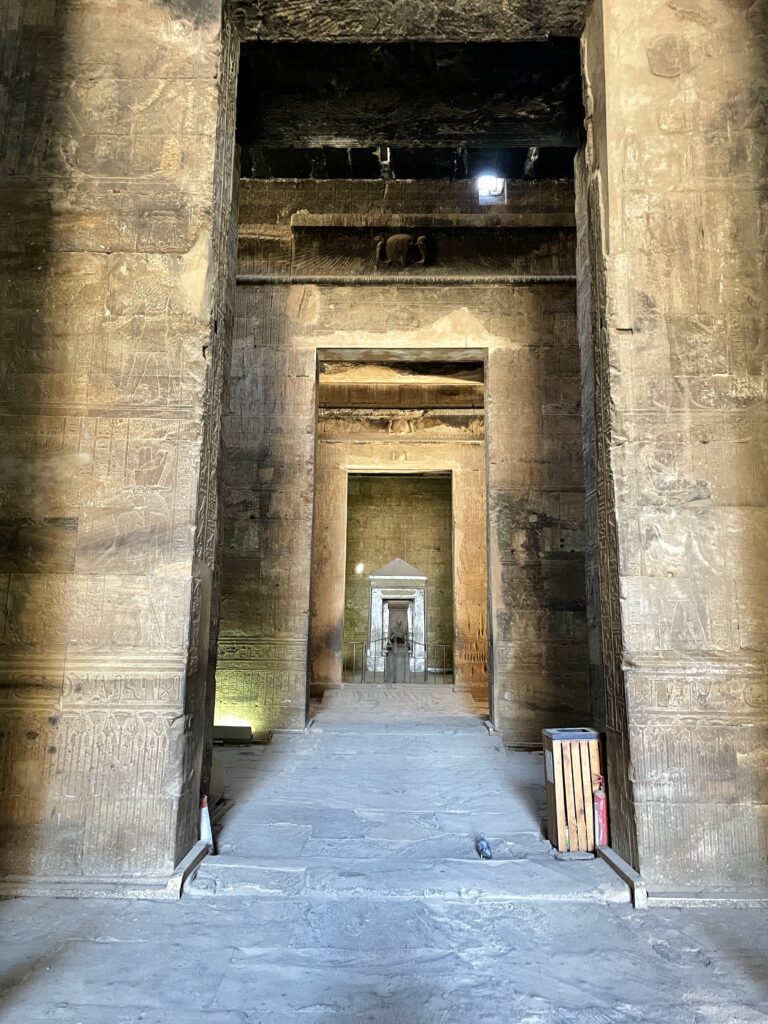
Inside the sanctuary is the original Naos associated with King Nectanebo II, the last natural-born ruler of Egypt (30th Dynasty-reign, 360-343 BCE).
Photo Credit: Thea’s Heart® LLC, 2022
The Naos, carved from a solid piece of black granite, stands approximately 13 feet high by 7 feet wide and rests on a granite stand. Inscriptions and imagery cover the box describing the purpose and use of the Naos, and the interior would have held the golden statue of Horus. A small glided wooden door is the only piece missing from this imposing box-like shrine. It is considered the oldest part of the temple. Also, inside the sanctuary is a replica solar barque. The original is at the Louvre in Paris; the barque would have held the golden statue of Horus during the ritual procession. There was once an altar within the sanctuary that went missing; an altar is currently on display, but the provenance is unknown to me. When we departed Edfu, the temple’s mystery beckoned me to discover its secrets through ongoing scholarship and spiritual inquiry.
©Thea’s Heart® LLC, 2023 – All Rights Reserved.

